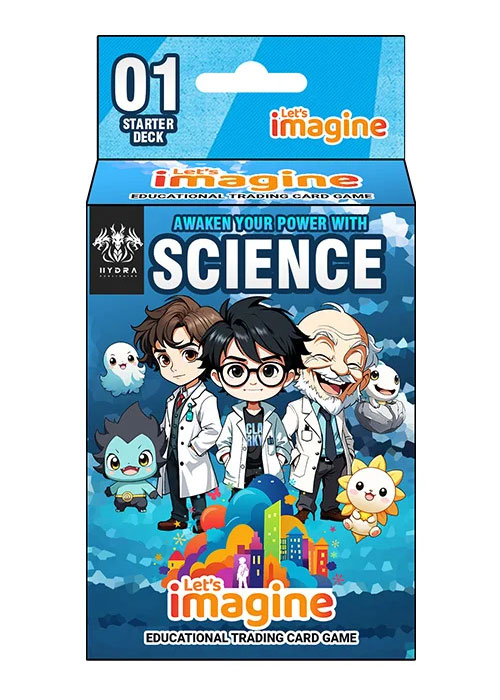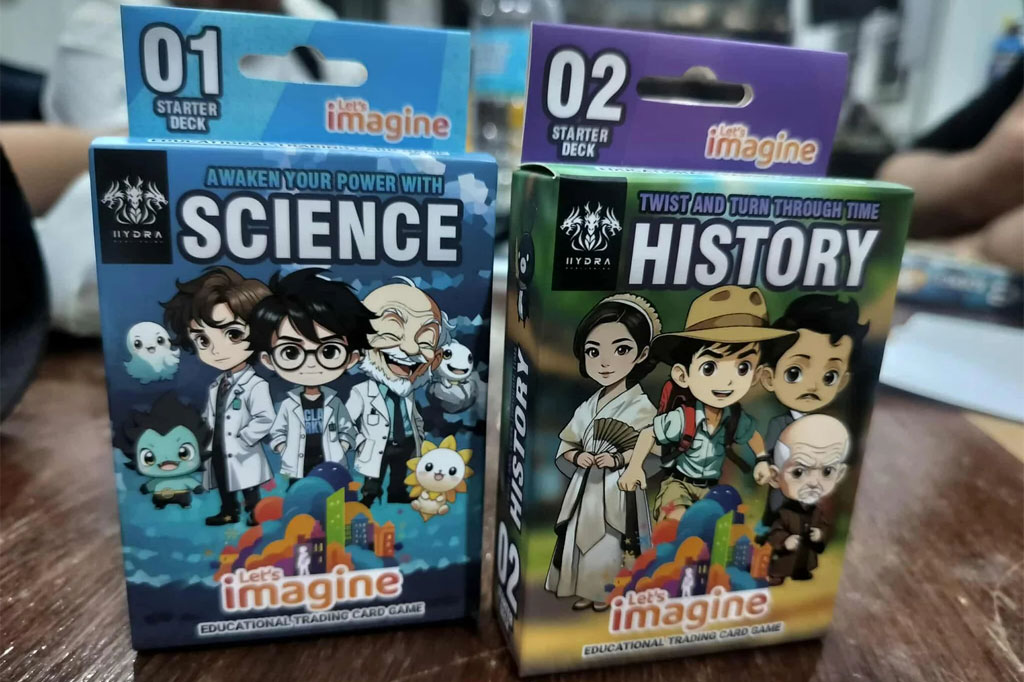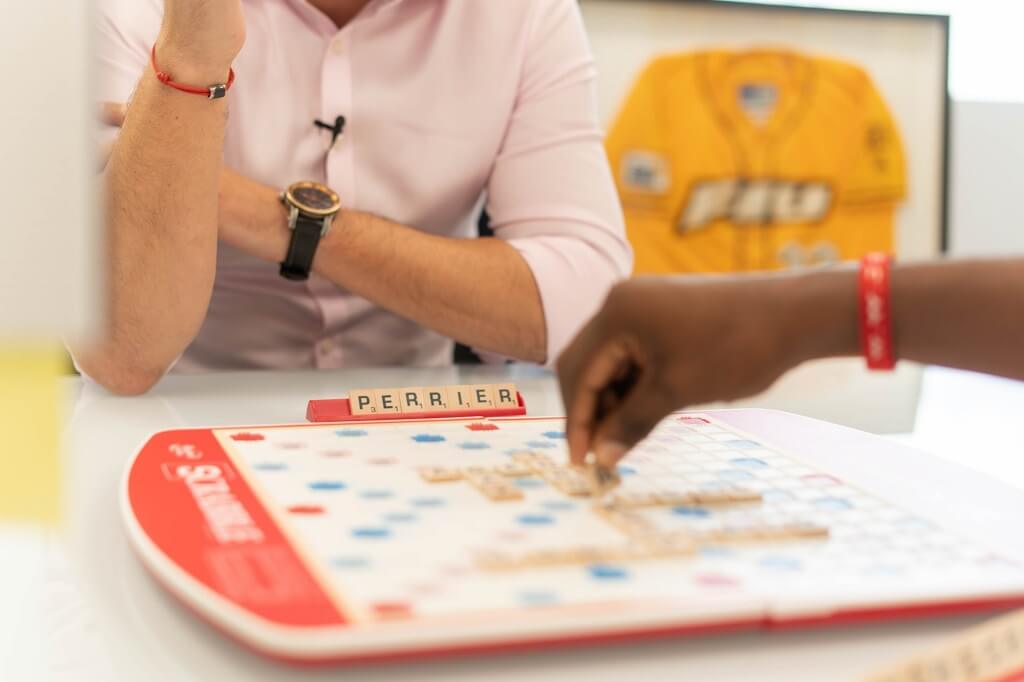Trading Card Games (TCGs) are not only fun and collectible, they’re also powerful tools for learning. When designed thoughtfully, educational TCGs can help children grasp complex concepts, practice critical thinking, and build social-emotional skills, all while engaging in strategic play.
For schools, integrating an educational TCG into the curriculum can make subjects like science, history, and language arts come alive through interaction and imagination.
Table of Contents
1. Why Educational TCGs Work So Well for Learning?
Trading Card Games are inherently motivating because they combine collection, competition, and creativity. Players collect cards, build decks, and strategize to win – an activity that can easily mirror learning goals. When educational content is built into card abilities or gameplay, children are naturally encouraged to absorb and apply information.
Here’s why they’re so effective in educational contexts:
- Active Learning: Instead of passively memorizing facts, players use knowledge to make in-game decisions.
- Social Interaction: TCGs promote communication, negotiation, and teamwork among students.
- Gamified Motivation: Collecting and upgrading cards creates a sense of progress and achievement.
- Cross-Curricular Potential: Cards can represent anything – words, numbers, animals, historical figures, chemical elements, making them adaptable across subjects.
For educators, TCGs also serve as a tool to assess understanding in a playful and non-threatening way.
2. Key Design Principles for Educational TCGs
Before jumping into specific ideas, it’s essential to consider what makes an educational TCG successful in a school environment.
a. Simplicity and Clarity
Rules should be simple enough for children to learn quickly. The focus should remain on the educational value, not overly complex game mechanics.
b. Curriculum Integration
Cards and mechanics should directly align with learning objectives. For example, if teaching math, each card’s action might involve solving equations or identifying number patterns.
c. Collaboration Over Competition
While competition is fun, cooperative modes (e.g., team-based goals or shared challenges) ensure that all students participate positively.
d. Visual Learning
Children respond strongly to colorful, well-illustrated cards. Artwork helps visual learners connect concepts with images, especially useful for subjects like biology or geography.
e. Adaptability
Teachers should be able to modify or expand the deck based on class progress or new topics. A modular system keeps the TCG relevant throughout the school year.
3. Educational TCG Concepts by Subject
Now, let’s explore some creative educational TCG concepts that can be developed for schools or educational publishers.
A. Science TCG – “Elemental Quest”

Each card represents an element, compound, or natural phenomenon. Students battle by combining cards to form chemical reactions or natural processes.
- Gameplay Example: Players collect “Element Cards” like Hydrogen, Oxygen, and Carbon. Combining cards forms compounds like H₂O (Water) or CO₂ (Carbon Dioxide), earning points for correct reactions.
- Learning Goals:
- Understand the periodic table and chemical bonding.
- Identify states of matter and chemical reactions.
- Bonus Feature: “Experiment Cards” simulate lab challenges or environmental events (e.g., “Volcano Eruption,” “Photosynthesis”), encouraging critical thinking.
B. Math TCG – “Number Warriors”
In “Number Warriors”, each card is a mathematical operation or value. Players combine cards to reach target numbers, solve puzzles, or outscore opponents using strategic calculations.
- Gameplay Example: Each turn, players draw cards like Multiply x2, Add 5, or Square Root. The goal might be to reach 50 using minimal moves.
- Learning Goals:
- Reinforce arithmetic operations.
- Develop logical reasoning and quick mental math.
- Variants: Teachers can introduce fractions, geometry, or algebra-based cards for older students.
C. Language & Vocabulary TCG – “Word Realms”
“Word Realms” turns language learning into an adventure. Each card features a word, part of speech, or grammar rule. Players use cards to build sentences, cast “spells,” or complete language challenges.
- Gameplay Example: A “Noun” card like Dragon can be combined with a “Verb” card like Roars and an “Adjective” card like Fierce to form creative sentences that earn points.
- Learning Goals:
- Expand vocabulary.
- Reinforce grammar and sentence structure.
- Encourage storytelling and creativity.
- Teacher Tip: Cards can correspond to reading assignments or weekly vocabulary lists.
D. History TCG – “ChronoClash”

In “ChronoClash,” students become time travelers who summon historical figures, events, and inventions to build civilizations or prevent disasters.
- Gameplay Example: A deck might include cards like Albert Einstein, Industrial Revolution, or Roman Empire. Players combine event and figure cards to “influence” historical outcomes.
- Learning Goals:
- Understand cause-and-effect relationships in history.
- Learn about key figures and their contributions.
- Develop strategic thinking through resource management.
- Classroom Use: Teachers can create themed decks for different eras, such as Ancient Civilizations, World Wars, or Modern History.
E. Environmental TCG – “EcoGuardians”
Players take on the role of environmental heroes protecting ecosystems from pollution and natural disasters. Cards represent animals, habitats, and conservation efforts.
- Gameplay Example: Students build ecosystems using “Habitat,” “Animal,” and “Resource” cards. Disasters like Oil Spill or Wildfire challenge players to respond using “Eco-Action” cards like Recycling or Tree Planting.
- Learning Goals:
- Understand ecosystems and biodiversity.
- Explore the human impact on the environment.
- Promote environmental awareness and sustainability practices.
- Bonus Feature: Real-world challenges can be tied to class projects (e.g., recycling drives, planting trees).
4. Classroom Integration Ideas
To make educational TCGs an ongoing part of learning, teachers can integrate them in several creative ways:
- Weekly Game Sessions: Dedicate short classroom sessions to play and learn new concepts interactively.
- Custom Deck Creation Projects: Let students design their own cards based on lessons learned, which reinforces retention and creativity.
- Collaborative Deck Building: Students work in teams to build decks that represent group research or presentations.
- Gamified Assessments: Replace traditional quizzes with TCG challenges that test applied knowledge.
- Cross-Subject Tournaments: Combine decks from multiple subjects (e.g., science + math) to encourage interdisciplinary learning.
5. Final Thoughts
For teachers and educational creators, the possibilities are endless. By merging storytelling, strategy, and curriculum-aligned content, educational TCGs can empower a new generation of learners who learn not by memorizing but by playing, thinking, and creating.




